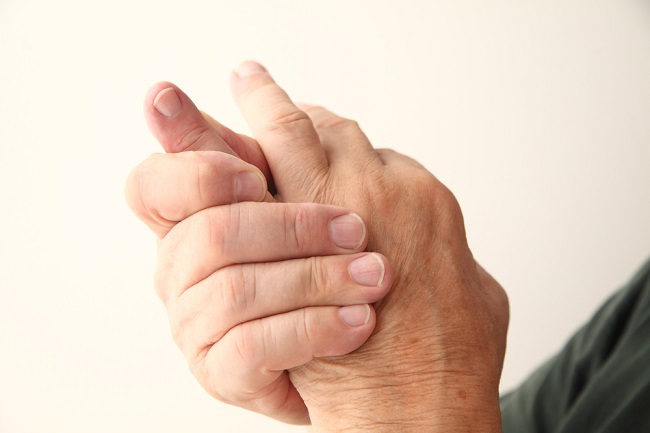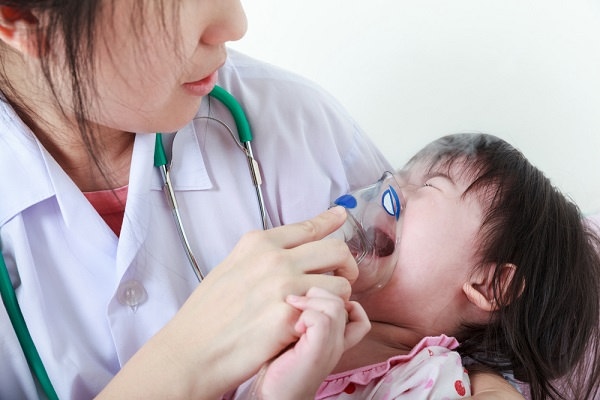The spread of infectious diseases in schools is very susceptible to occur, either from classmates who are sick or the school environment is not clean. Therefore, parents must always be vigilant and take various preventive steps so that the health of their children is maintained.
Children are more at risk of contracting infectious diseases, because their immune systems are still weak. Moreover, the school environment is a vulnerable place for children to contract diseases, ranging from unhealthy snacks, dirty environments, to high interactions with classmates.
 Most children also do not fully understand healthy living habits, such as washing their hands at all times, and still need to be reminded. Therefore, the guidance and supervision of parents is very important.
Most children also do not fully understand healthy living habits, such as washing their hands at all times, and still need to be reminded. Therefore, the guidance and supervision of parents is very important.
Infectious Diseases to Watch Out for in Schools
You may have seen your child come home from school with a fever, paleness, and stomach pain. Some of these conditions can be a sign of a child contracting the disease. Well, there are several types of infectious diseases that you need to be aware of, namely:
1. Acute respiratory infection (ARI)
ARI is an infectious disease due to infection of the respiratory tract which is not only caused by viruses, but also bacteria. One of the causes of ARI is influenza.
The virus that causes ARI attacks the respiratory system and causes several symptoms, such as nasal congestion, sneezing, coughing, and sore throat. Sometimes, the child also has a high fever for several days, weakness, and a headache. In more severe cases, ARI can develop into pneumonia.
If your child has the flu, there are several things you can do, namely making sure your child gets plenty of rest, provides nutritious food, and provides adequate fluids so that the child does not become dehydrated.
In addition, you can also give children flu medicine that is widely sold in the market according to the symptoms experienced by the child.
2. Chickenpox
Chickenpox is a disease that is susceptible to transmission in schools and is generally experienced by children under the age of 12. This disease is very easily transmitted through splashes of liquid that come out of the mouth or nose when sneezing and coughing.
Direct contact with the liquid from the cracked smallpox lump and sharing eating utensils can also increase the risk of transmission. A child who catches chickenpox will experience symptoms, such as:
- Fever
- Sore throat
- Dizzy
- Abdominal pain accompanied by a skin rash and small lumps filled with clear fluid.
When infected with smallpox, usually the child will feel an extraordinary itching. However, do not let the child scratch the lump that appears, because it will cause a scar if it gets infected with bacteria.
3. Conjunctivitis (pink eye)
Conjunctivitis is an infectious disease caused by a viral or bacterial infection. Pink eye is caused by inflammation of the conjunctiva, which is the tissue that lines the inside of the eyelid and the white of the eye.
Symptoms include watery eyes, pain when blinking, swelling of the eyelids, and itchy eyes. In more severe cases, inflammation can lead to the formation of pus.
Conjunctivitis caused by a viral infection can go away on its own. However, if this condition is caused by bacteria, antibiotic treatment is required according to a doctor's prescription.
To prevent children from infectious diseases at this school, you simply teach them to wash their hands properly.
4. Gastroenteritis
Gastroenteritis is a type of infectious disease caused by a viral infection of the digestive tract. This condition can cause symptoms such as diarrhea, fever, weakness, and abdominal pain.
There are several factors that can increase a child's risk of developing gastroenteritis, namely poor school environment hygiene, contact with friends with diarrhea, or consumption of food and drink that has been contaminated with viruses and bacteria.
To prevent children from this disease, you can teach children to live a clean and healthy lifestyle, such as washing hands properly, keeping the house clean, and eating nutritious foods.
5. Measles
Measles, also known as rubella, is an infectious disease caused by a virus. Symptoms include fever, cough, runny nose, sore throat, red eyes, and rashes all over the body.
The measles virus is very easily spread through the air that has been contaminated by splashes of liquid that come out of the mouth or nose of the sufferer when coughing or sneezing.
As a preventive measure, it is very important to give vaccines to children. There are two types of vaccines used to prevent measles, namely the MR vaccine and the MMR vaccine.
6. Head lice
Head lice are parasites that live by sucking blood from the human scalp. Although harmless, head lice are very annoying because they can cause itching and irritation of the scalp.
Head lice are very easily transmitted through contact with sufferers, for example sitting next to each other or playing with other children who have head lice. In addition, sharing personal items, such as combs, hair ties, and hats can also be a means of transmitting head lice.
7. Scabies
Scabies is caused by the presence of mites that live and nest in the outermost layer of the skin. Symptoms are itching at night and small red bumps appear. The mites that cause scabies are so small that they are very difficult to see with the eye.
This disease is very easily transmitted through physical contact or sharing activities with children with scabies. For example, shaking hands and hanging clothes near the patient's clothes. No wonder that scabies is a disease that is often experienced by children living in school dormitories.
8. Ringworm
Ringworm is an infectious disease caused by a fungus. This disease is characterized by the appearance of red, scaly patches that feel itchy. There are several causes of ringworm that are prone to attack children, namely:
- Damp place to live
- Take a shower in a public bathroom
- Not cleaning yourself after swimming in a public pool
- Sharing equipment with children with ringworm
Several ways can be done to treat ringworm and one of them is by applying an antifungal cream on the skin that is infected with ringworm.
9. Mumps
Mumps is known for characteristic swelling of the cheeks, neck, and jaw. This condition occurs due to swelling of the salivary glands due to a viral infection. The virus can be spread through sneezing, coughing, sharing eating utensils, or not washing hands after coming into contact with an infected person.
In some cases, mumps is also accompanied by other symptoms, such as fever, weakness, loss of appetite, headache, and muscle aches. This infectious disease does not require special treatment and can be cured in a few weeks.
However, as a precautionary measure, you can bring your child for the MMR vaccination.
How to Prevent Infectious Diseases in Schools
So that children do not get sick easily and avoid various infectious diseases, there are several preventive steps you can take, namely:
- Teach children a clean and healthy lifestyle by getting used to washing their hands all the time.
- Make sure your child gets the vaccine on schedule.
- Teach children not to share personal items with their friends.
- If your child lives in a dormitory, provide him with sufficient personal items, such as sheets, cutlery, and towels, so he doesn't have to borrow from other children.
- Keep the home and school environment clean, especially the cleanliness of food and toilets.
When a child is exposed to a contagious disease that often occurs at school, let him rest until his fever subsides and his symptoms improve, so he doesn't infect his friends at school.
If your child shows symptoms that are suspected to be related to the infectious diseases in the school mentioned above, immediately take him to the doctor so that he can be examined and given the right treatment.









